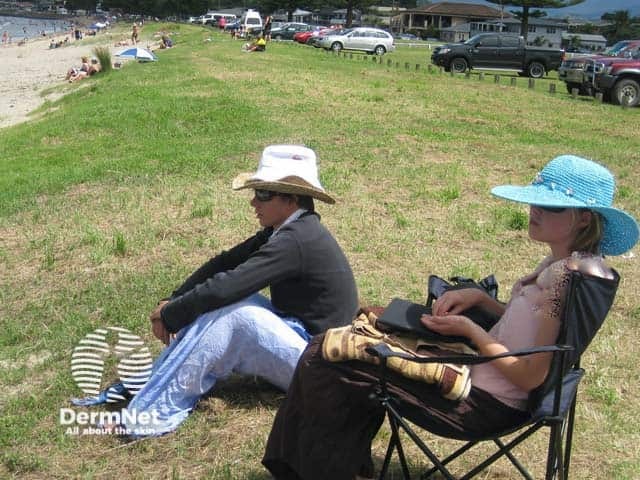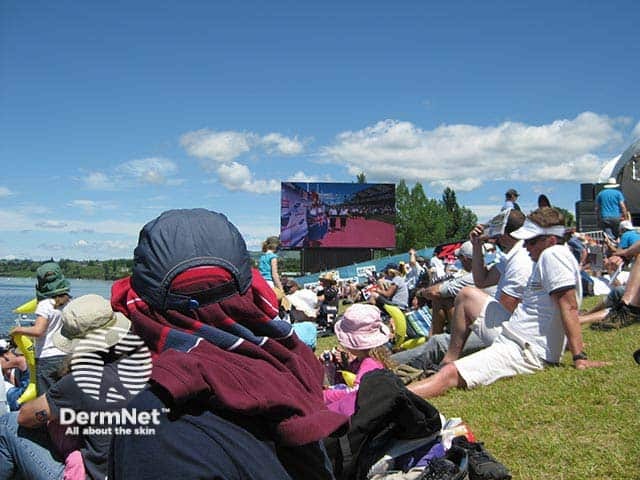Main menu
Common skin conditions

NEWS
Join DermNet PRO
Read more
Quick links
Authors: Dr Libby Whittaker, Medical Writer, New Zealand (2023)
Previous contributors: Vanessa Ngan (2006)
Reviewing dermatologist: Dr Ian Coulson
Edited by the DermNet content department
Introduction
Sun protective clothing ratings and regulations
Protective fabrics
Recommendations
Sun protective clothing is an effective way to shield skin from ultraviolet (UV) radiation, sunburn, and sun damage. They also protect the skin from visible light.
Exposure to UV radiation contributes to skin ageing and is the main cause of skin cancer (eg, basal cell carcinoma, squamous cell carcinoma, and melanoma). Sun protection methods, including sunscreen and sun protective clothing, are important in reducing these damaging effects.

Wide-brimmed hats, long sleeves, and long skirts are highly sun-protective

It is never too early to start photoprotection - for many a significant proportion of lifetime UV exposure occurs before the age of 10

A scarf can protect the vulnerable neck if a non-brimmed hat is worn
Sun protective clothing is manufactured from UV-protective fabric. The commonly accepted measure is UV protection factor (UPF).
UPF, similar to SPF (sun protection factor) used to rate sunscreens, is the rating used to measure the UV rays that pass through fabrics when exposed to UV radiation. For both UPF and SPF, the higher the number, the greater the protection (eg, UPF 50 blocks 98% of UV radiation).
Sun protective clothing will lose its effectiveness over time, but can generally be expected to last 1–2 years with normal wear, tear and laundry.
Regulations in Europe (EN 13758-2), Australia (AS 4399:2020), and New Zealand (AS/NZS 4399:2017) specify body coverage requirements as well as minimum UPF in order to be designated as sun protective clothing.
In the United States (US), sun protective clothing guidelines are provided by the American Association of Textile Chemists and Colorists (AATCC 183) and the American Society for Testing and Materials (ASTM D6603 and ASTM D6544). Under these guidelines, minimum body coverage requirements have not yet been established.
European guidelines require a higher UPF of at least 40; while in the US, Australia, and New Zealand, minimum protection is UPF 15.
Another less commonly used scale for rating the sun protective ability of clothing is garment protective factor (GPF), based on UV protection properties and body surface area coverage:
It is not always necessary to buy clothing made from specially manufactured sun protective fabric, as a wide variety of everyday apparel will provide some protection.
To assess protection, hold the material up to a window or lamp and see how much light gets through. Less light filtering through means greater protection.
Darker colours provide more protection than fabrics of the same material in light colours.
Many fabrics, including special sun-protective clothing, will have their protection reduced, some by as much as half, when they get wet. This is especially true for wet cotton.